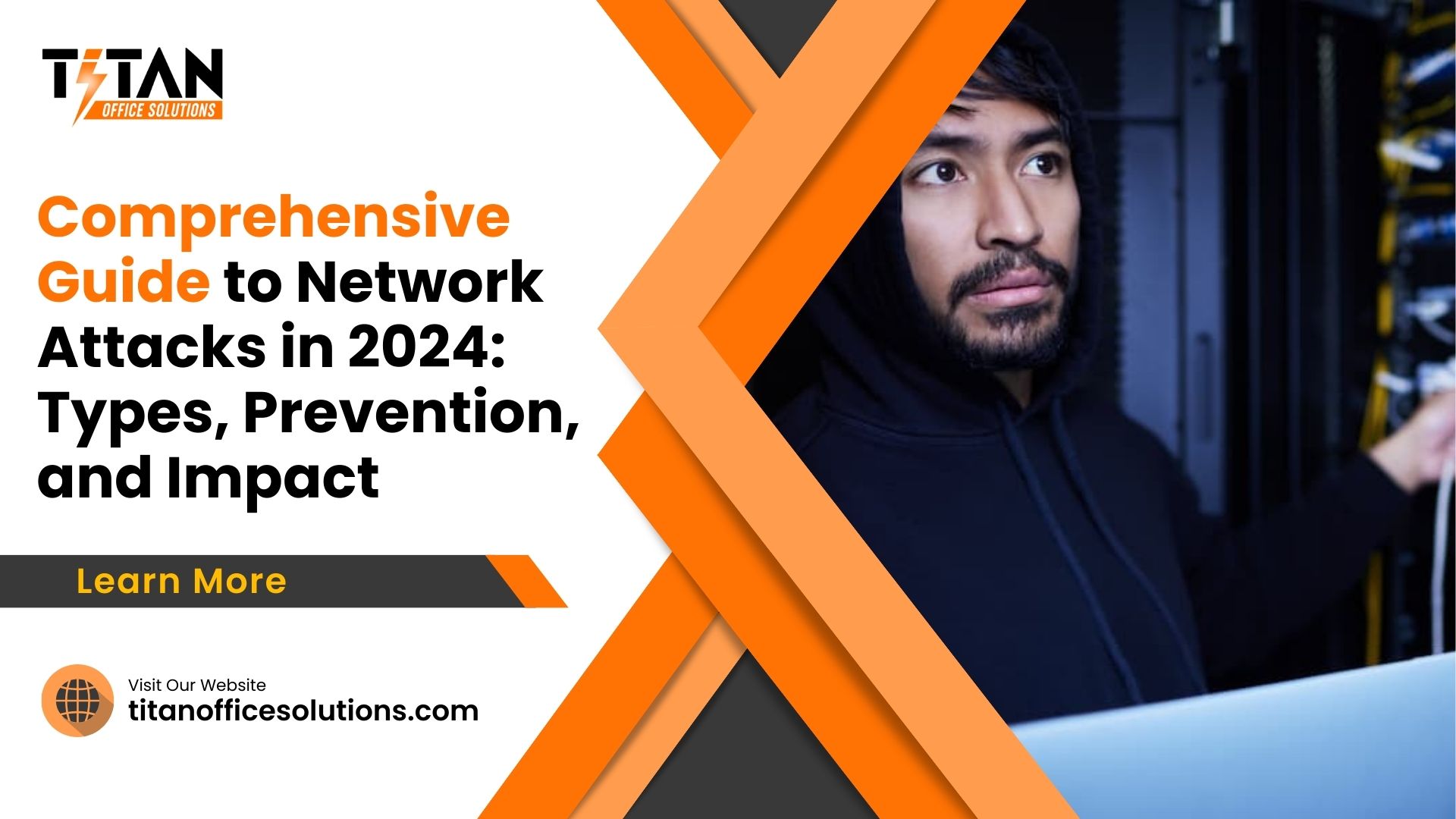Network attacks have become a prevalent and significant concern for both individuals and organizations. As reliance on digital networks and online platforms increases, so does the risk of malicious actors targeting these systems. A network attack, fundamentally, involves any deliberate attempt to breach or compromise a computer network’s security. This breach can disrupt operations, steal sensitive information, or cause other forms of damage.
A network attack can manifest in various forms, from sophisticated cyber threats orchestrated by organized criminal groups to simple yet effective phishing schemes aimed at unsuspecting individuals. Understanding network attacks is crucial for implementing effective cybersecurity measures and safeguarding vital information. This comprehensive guide will explore the nature of network attacks, their evolution over time, and their current state in 2023.
The Evolution of Network Attacks
Historical Context
Network attacks are not a recent phenomenon; they have evolved alongside the growth of computer networks and the internet. The history of network attacks can be traced back to the early days of computing when simple viruses and worms began to spread. One of the earliest recorded attacks was the Morris Worm in 1988, which disrupted approximately 6,000 computers by exploiting vulnerabilities in UNIX systems. This incident highlighted the potential for significant disruption and paved the way for more advanced and targeted attacks.
As technology progressed, so did the sophistication of attacks. The 1990s saw the emergence of more complex malware and the introduction of the first forms of denial-of-service (DoS) attacks, where attackers would overwhelm a network or website to render it unusable. With the dawn of the new millennium, attacks became increasingly refined, leveraging new techniques such as phishing and ransomware. These early forms of cyber attacks laid the groundwork for the more sophisticated and varied threats we face today.
Current Trends in 2024
In 2024, the landscape of network attacks has become more complex and diverse. Attackers have adapted to new technologies and methodologies, making it crucial for individuals and organizations to stay vigilant. Here are some notable trends in network attacks this year:
- Advanced Persistent Threats (APTs): APTs involve highly sophisticated and prolonged attacks that target specific organizations or sectors. These attacks are often carried out by well-funded and skilled adversaries who aim to gain persistent access to a network over long periods. APTs can cause significant damage by stealing sensitive information or disrupting operations.
- Ransomware Evolution: Ransomware attacks have evolved from simple encryption methods to more complex and targeted campaigns. Attackers now use double extortion tactics, where they not only encrypt data but also threaten to leak stolen information unless a ransom is paid. This dual threat increases the pressure on victims to comply.
- IoT Vulnerabilities: As the Internet of Things (IoT) expands, so do the vulnerabilities associated with it. Many IoT devices are not designed with robust security measures, making them attractive targets for attackers. Compromised IoT devices can be used to launch large-scale attacks, such as Distributed Denial of Service (DDoS) attacks.
- Zero-Day Exploits: Zero-day exploits, which target previously unknown vulnerabilities, remain a significant threat. These exploits can be highly effective because they target weaknesses that have not yet been patched or addressed by security vendors. The discovery and exploitation of zero-day vulnerabilities can have severe consequences for affected networks.
- Social Engineering Tactics: Social engineering attacks continue to be a major concern. Attackers use psychological manipulation to deceive individuals into divulging sensitive information or performing actions that compromise security. Techniques such as spear-phishing and pretexting are increasingly sophisticated and difficult to detect.
- AI and Machine Learning in Attacks: The use of artificial intelligence (AI) and machine learning (ML) by attackers is on the rise. These technologies enable attackers to automate and refine their attacks, making them more effective and harder to defend against. AI-driven attacks can analyze large volumes of data to identify vulnerabilities and tailor attacks to specific targets.
3. Impact of Network Attacks
The impact of network attacks can be devastating, affecting various aspects of an organization or individual’s operations and security. Understanding these impacts is essential for recognizing the importance of proactive network security measures.
Operational Disruption
One of the primary consequences of a network attack is operational disruption. Attacks such as DoS and DDoS can overwhelm a network or website, causing significant downtime and interrupting business activities. For organizations, this can result in lost revenue, decreased productivity, and damage to reputation. Even temporary disruptions can have long-lasting effects on customer trust and confidence.
Data Breaches
Data breaches are a serious concern associated with network attacks. Attackers may gain unauthorized access to sensitive information, including personal, financial, or proprietary data. The repercussions of a data breach can be far-reaching, including identity theft, financial loss, and legal consequences. Organizations must invest in robust security measures to protect sensitive data and comply with data protection regulations.
Financial Loss
The financial impact of network attacks can be substantial. Ransomware attacks, for example, often involve paying a ransom to regain access to encrypted data. Even if a ransom is not paid, the cost of recovering from an attack, including expenses related to remediation, legal fees, and potential regulatory fines, can be significant. Organizations must budget for cybersecurity and incident response to mitigate the financial risks associated with network attacks.
Reputation Damage
Reputation damage is another critical consequence of network attacks. A high-profile attack can erode customer trust and damage an organization’s brand image. Rebuilding trust after a security breach can be challenging and time-consuming. Companies must prioritize transparency and communication with stakeholders to manage the reputational impact of an attack effectively.
Legal and Regulatory Implications
Network attacks can also have legal and regulatory implications. Many jurisdictions have strict data protection laws that require organizations to report data breaches and implement appropriate security measures. Failure to comply with these regulations can result in legal actions and substantial fines. Organizations must stay informed about relevant regulations and ensure their security practices meet legal requirements.
Types of Network Attacks and How to Protect Against Them
Understanding the various types of network attacks is crucial for developing effective defense strategies. Each attack method has its own techniques and objectives, and recognizing these can help in implementing targeted security measures. Here’s an overview of some of the most common network attacks:
Phishing Attacks
Phishing attacks are deceptive practices aimed at tricking individuals into revealing sensitive information, such as login credentials or financial details. These attacks usually come in the form of emails, messages, or websites that appear to be from legitimate sources. The goal is to lure victims into providing personal information or clicking on malicious links.
How It Works: Phishing emails often contain urgent messages that prompt the recipient to click on a link or download an attachment. These links may lead to fake websites designed to capture login details, or the attachments may contain malware.
Prevention: To defend against phishing, it’s essential to educate users about recognizing suspicious emails and messages. Implementing email filters that identify and block phishing attempts can also be effective. Using multi-factor authentication (MFA) adds an additional layer of security, making it harder for attackers to access accounts even if credentials are compromised.
Ransomware Attacks
Ransomware attacks involve encrypting a victim’s data and demanding a ransom for the decryption key. This type of attack can cripple an organization’s operations by rendering critical data inaccessible until the ransom is paid.
How It Works: Ransomware is typically delivered through phishing emails or exploit kits that take advantage of vulnerabilities in software. Once activated, the ransomware encrypts files on the infected system and displays a ransom note with instructions for payment.
Prevention: To mitigate ransomware risks, regularly back up important data and ensure that backups are stored offline or in a secure location. Employ robust security software, keep all systems and applications updated, and educate users about avoiding malicious links and attachments.
Denial of Service (DoS) and Distributed Denial of Service (DDoS) Attacks
DoS and DDoS attacks aim to overwhelm a network or website with excessive traffic, making it inaccessible to legitimate users. A DoS attack originates from a single source, while a DDoS attack is coordinated from multiple sources.
How It Works: Attackers use botnets or other methods to generate massive amounts of traffic that flood a target’s servers or network infrastructure. This can lead to degraded performance or complete service outages.
Prevention: Implementing network traffic monitoring and using specialized DDoS protection services can help mitigate these attacks. Configuring rate limiting and redundant network resources can also provide additional defenses against traffic surges.
Zero-Day Exploits
Zero-day exploits target previously unknown vulnerabilities in software or hardware. Since there is no patch available at the time of the attack, these exploits can be particularly damaging.
How It Works: Attackers discover and exploit vulnerabilities before the software vendor is aware of them. Zero-day attacks can be highly effective as they bypass traditional security measures that rely on known threat signatures.
Prevention: Keeping systems and software updated with the latest patches is crucial for minimizing the risk of zero-day exploits. Employing advanced threat detection systems that use behavioral analysis and anomaly detection can also help identify and respond to suspicious activities.
Malware and Exploits
Malware refers to malicious software designed to damage or gain unauthorized access to systems. Exploits are specific methods used to take advantage of vulnerabilities in software to install malware or perform other malicious actions.
How It Works: Malware can be distributed through various channels, including email attachments, infected websites, or compromised software. Once installed, malware can steal data, damage files, or give attackers control over the infected system.
Prevention: Using comprehensive antivirus and anti-malware solutions is essential for detecting and removing malicious software. Regularly updating software to patch vulnerabilities and conducting routine security audits can also help in preventing malware infections.
Network Security Threats and Vulnerabilities
Recognizing and addressing network security threats and vulnerabilities is key to maintaining a secure network environment. Here’s an overview of some common threats and vulnerabilities:
Understanding Vulnerabilities
Vulnerabilities are weaknesses in software, hardware, or network configurations that can be exploited by attackers. Common vulnerabilities include outdated software, misconfigured systems, and weak passwords.
How It Works: Attackers use vulnerabilities to gain unauthorized access, escalate privileges, or compromise systems. Vulnerabilities can be exploited through various means, including malware, social engineering, or direct attacks.
Prevention: Conducting regular vulnerability assessments and penetration testing helps identify and address potential weaknesses. Implementing strong password policies, using encryption, and applying patches and updates can also mitigate the risk of exploitation.
Social Engineering
Social engineering involves manipulating individuals into divulging confidential information or performing actions that compromise security. This can include tactics such as impersonation, pretexting, and baiting.
How It Works: Attackers may pose as trusted individuals or organizations to deceive targets. They may use phone calls, emails, or in-person interactions to gain sensitive information or access.
Prevention: Training employees to recognize and respond to social engineering tactics is crucial. Establishing verification procedures for sensitive information requests and implementing strict access controls can also help prevent social engineering attacks.
Preventing Network Attacks
Effective prevention of network attacks requires a multi-faceted approach that includes technology, policies, and user education. Here’s a comprehensive look at how to protect your network:
Implementing Effective Security Measures
Firewalls: Firewalls act as a barrier between a network and external threats. They monitor and control incoming and outgoing network traffic based on predetermined security rules.
Antivirus Software: Antivirus solutions help detect and remove malicious software before it can cause damage. Regular scans and real-time protection are essential components of a robust security strategy.
Multi-Factor Authentication (MFA): MFA adds an extra layer of security by requiring users to provide multiple forms of verification before accessing systems. This reduces the risk of unauthorized access, even if credentials are compromised.
Network Segmentation: Segmenting a network into separate zones can help contain and limit the impact of an attack. By isolating critical systems and sensitive data, organizations can reduce the risk of widespread damage.
Best Ways to Prevent Network Attacks
Regular Software Updates: Keeping software and systems up-to-date with the latest patches and updates is crucial for addressing vulnerabilities and preventing attacks.
Data Backups: Regularly backing up important data and storing backups in a secure location can help recover from ransomware attacks and other data loss incidents.
Security Awareness Training: Educating employees about cybersecurity best practices and how to recognize potential threats is essential for preventing attacks. Training should include recognizing phishing attempts, using strong passwords, and following security protocols.
Incident Response Planning: Developing and testing an incident response plan ensures that organizations are prepared to respond effectively to network attacks. This plan should outline roles, responsibilities, and procedures for managing and mitigating the impact of an attack.
Incident Response and Handling
Detecting Attacks: Implementing monitoring tools that can detect unusual activity or anomalies helps in identifying potential attacks early. Intrusion Detection Systems (IDS) and Security Information and Event Management (SIEM) solutions are valuable in this regard.
Responding to Incidents: When an attack is detected, it’s crucial to follow the incident response plan. This includes isolating affected systems, assessing the scope of the attack, and taking steps to contain and remediate the issue.
Post-Incident Review: After an incident, conducting a thorough review helps identify what went wrong and how to improve security measures. Lessons learned from the incident should be used to update policies, procedures, and security controls.
FAQs
1. What are the common types of cyber attacks?
Common types of cyber attacks include phishing, ransomware, denial of service (DoS) attacks, and password attacks. These attacks exploit various vulnerabilities within a network or system to compromise security. Each type has its own techniques and objectives, targeting different aspects of a network or system.
2. What are the top network attacks to be aware of in 2024?
The top network attacks in 2024 include ransomware attacks, which encrypt data and demand a ransom; phishing attacks that trick users into revealing sensitive information; and Distributed Denial of Service (DDoS) attacks that overwhelm network resources. Understanding these top network attacks helps in developing effective defenses.
3. What are the main types of network attacks?
The main types of network attacks are phishing, ransomware, malware, and brute-force attacks. Each of these attacks targets different vulnerabilities within a network. For example, brute-force attacks aim to crack passwords, while ransomware seeks to encrypt data and extort money.
4. How can I protect my corporate network from cyber attacks?
Protecting a corporate network involves implementing a comprehensive network protection strategy. This includes deploying security tools, maintaining a strong security posture, using network address translation (NAT) to obscure internal IP addresses, and applying robust security policies. Regularly monitoring network traffic and updating security services are also crucial for protecting the corporate network.
5. How can network users contribute to network protection?
Network users play a vital role in network protection by adhering to security policies, using strong, unique passwords, and being aware of common attack types like phishing. They should also report suspicious activity and follow best practices for secure access to the network.
6. What are password attacks and how can they be prevented?
Password attacks involve attempts to gain unauthorized access by exploiting weak or stolen passwords. Common methods include brute-force attacks, where attackers try numerous password combinations, and credential stuffing, where previously leaked passwords are used. Preventing password attacks involves using strong, complex passwords, enabling multi-factor authentication (MFA), and regularly updating passwords.
7. What are known vulnerabilities in network security?
Known vulnerabilities are weaknesses in software, hardware, or network configurations that can be exploited by attackers. These vulnerabilities may include unpatched software, misconfigured settings, and outdated security protocols. Regular vulnerability assessments and patch management are essential for mitigating these risks.
8. How does network address translation (NAT) enhance network security?
Network address translation (NAT) enhances network security by hiding internal IP addresses from external networks. NAT allows multiple devices within a private network to share a single public IP address, reducing the attack surface and making it harder for external attackers to access internal network resources.
9. What is network exploitation and how can it be prevented?
Network exploitation involves taking advantage of vulnerabilities within a network to gain unauthorized access or control. This can include exploiting unpatched software or misconfigured network services. Prevention strategies include applying regular updates and patches, using intrusion detection systems (IDS), and ensuring proper configuration of network services.
10. How do security teams detect and respond to cyber attacks?
Security teams detect and respond to cyber attacks through a combination of monitoring network traffic, employing security tools, and analyzing security alerts. They use incident response plans to manage and mitigate the impact of attacks, including isolating affected systems, investigating the breach, and implementing recovery measures.
11. What is the role of security services in protecting a network?
Security services provide specialized protection for networks by offering services such as threat detection, vulnerability management, and incident response. These services help organizations maintain a strong security posture and defend against attacks by utilizing advanced security tools and expertise.
12. How does network monitoring help in managing security threats?
Network monitoring helps in managing security threats by continuously analyzing network traffic and detecting unusual activities. Tools that monitor network traffic can identify potential threats and provide early warning of attacks, enabling timely responses to mitigate risks.
13. What are active network attacks and how can they be mitigated?
Active network attacks involve real-time attempts to disrupt or compromise network operations. Examples include man-in-the-middle attacks and session hijacking. Mitigation strategies include using encryption, implementing strong authentication methods, and monitoring for abnormal network activity.
14. How do security policies contribute to network protection?
Security policies establish guidelines and procedures for managing and securing network resources. They help in defining acceptable use, access controls, and incident response protocols. Effective security policies ensure consistent and proactive protection across the network.
15. What is the significance of network exploitation at the network level?
Network exploitation at the network level refers to exploiting vulnerabilities within the network infrastructure to gain unauthorized access or control. Addressing network exploitation involves securing network services, using firewalls, and regularly updating network configurations to prevent unauthorized access.
16. How do different types of cyber attacks affect the entire network?
Different types of cyber attacks can impact various aspects of an entire network. For example, ransomware attacks can encrypt critical data across the network, while DDoS attacks can disrupt network services and degrade performance. Understanding these impacts helps in preparing and implementing comprehensive security measures to protect the network.
Understanding and addressing network attacks requires a comprehensive approach that includes recognizing various attack methods, addressing vulnerabilities, and implementing effective prevention strategies. By staying informed about the latest threats and adopting proactive security measures, individuals and organizations can better protect their networks and mitigate the risks associated with network attacks. As the threat landscape continues to evolve, continuous vigilance and adaptation are essential for maintaining robust network security.
Titan Office Solutions
Phone: (704) 741-0821
Email: info@titanofficesolutions.com
Hours of Operations: Monday through Friday from 8:30 AM to 6 PM EST.
Website: titanofficesolutions.com




